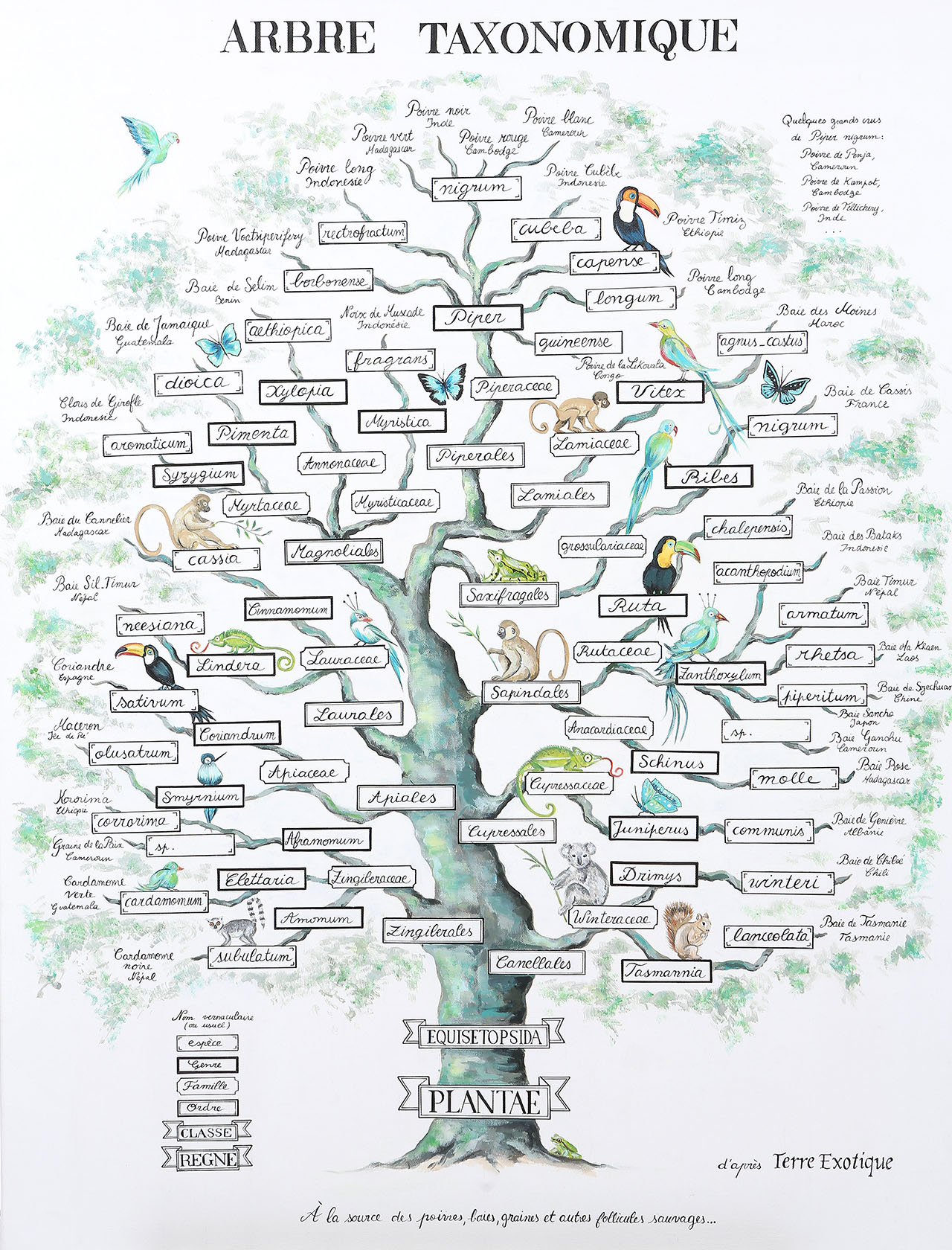Nowadays, we use the word "pepper" for all sorts of spices and it's truly confusing! So, what is a “pepper”?

The best way to fully understand all the different berries, seeds and pods is to look at the botanical classification.

This was the first botanical work to consistently apply a binomial nomenclature to plants. Previously, plants would be known by a long polynomial in Latin, which meant a long list of nouns and adjectives used to describe a plant. The new binomial nomenclature meant the genus was qualified by an adjective which identified the species. So, pepper became known, for botanical purposes, as Piper nigrum, Piper longum… from the Piperales order and the Piperaceae family.

Linnaeus’ classification created the following hierarchy: kingdom, class, order, family, genus, species, which gradually came to be the norm from the 19th century. It defines the reproductive system of plants rather than what they are used for. When botanists research Piper, they do not take into account the spicy taste, but it is more the physical description that matters. Therefore, all the Piper we found when we explored the American and Asian forests, could be part of the genus defined by Linnaeus. Later on, taxonomists aimed to go beyond the simple description of living organisms and sought to determine the ancestry of plants (this was linked to the theory of evolution) and so drew up phylogenetic trees of life.

Isn't pepper just a spice that you can grind?
In English, what we commonly call pepper, for example “Szechuan pepper”, is not really a pepper in botanical terms. In fact, pepper is a commercial term used to describe these products which makes things confusing. The name “Japanese pepper” is used to describe Sansho berries, when in fact it is a Zanthoxylum from the Rutaceae family and not a Piperaceae. It is the same for “Szechuan pepper”. These terms “Japanese” and “Szechuan” sound better for marketing purposes. There are plenty of other examples…..
During the 15th century, as spices became more widely used, they diminished in value, and were replaced by new rarer and more expensive species, which came to be traded under the term “Pepper”.
For example, Melegueta pepper or the Grain of Paradise, Aframomum melegueta (Zingiberaceae), which was fashionable in the 19th century, replaced black pepper. Long pepper replaced Melegueta pepper in the 15th century. The American chilli pepper, the Asian peppers in the 16th century, etc. However, the success of the chilli pepper was in fact due to the fact that it was easy to grow and so it was cheaper. Its success is also linked to the fact that the Silk Road was cut off at the end of the 15th century by the powerful Ottoman Empire which took over the Middle East and controlled the routes of the Indian ocean until the Portuguese arrived in the mid-16th century, who were then driven away by the Dutch later in the 16th century …


At the time, we were not aware of the wide variety of “peppers”. It was not until there was further exploration into tropical forests that there was a clearer idea of the enormous diversity of the Piper genus. For a long time, even in the 18th century, our knowledge of peppers was a far cry from what it is today. We spoke about spices in general, without a clear awareness of the biodiversity that we only started to grasp at the end of the 19th century and the beginning of the 20th century.

 Français
Français 